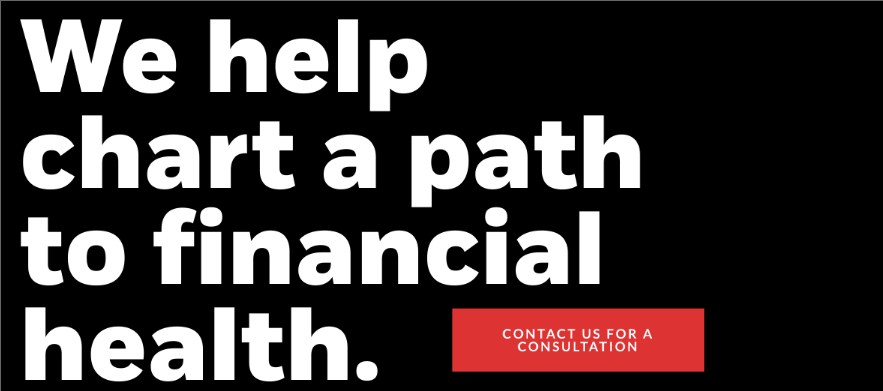6 step checklist for small business tax preparation filing 2023 tax year
Juggling the responsibilities of a small business owner can feel overwhelming. Hiring, daily operations, marketing, and more – where’s the time for managing the books, paying vendors, interviewing new hires, and preparing for tax season?
For many, tax season conjures images of frantic document gathering, form-filling, and nail-biting anxiety, wondering if you saved enough money for tax obligations? But it doesn’t have to be this way.
By starting your tax preparation well ahead of the deadline, you can avoid the chaos and claim valuable deductions with ease. This small business tax prep guide offers practical tips to get your business ready for a smooth and stress-free tax season. Including, what tax forms to file, how money to set aside and documentation to gather.
- Determine the specific types of taxes and business tax forms you need to file based on your business structure.
- Create a personalized tax filing calendar to ensure timely completion of all tasks.
- Organize your books and documents related to your business income and expenses.
- Save roughly around 30% of your income for tax time
- Research common tax deductions and credits available to small businesses.
- If required, request a filing extension to avoid penalties and late fees.
1 Determine the specific types of taxes and business tax forms you need to file based on your business structure
Small businesses face a variety of tax obligations, both federal and state. Understanding these key tax types can help you stay compliant and avoid penalties:
Income Taxes:
- C Corporations: Pay taxes twice, once at the corporate level and again on dividends to shareholders. The current federal rate is 21%.
- Flow-Through Entities (S Corporations, Partnerships, Sole Proprietorships): Pass-through entities get a 20% tax deduction, income flows through to the individual owner’s tax return and is taxed at their personal income tax rate.
- State Income Tax: Varies by state and may have additional local requirements. Consult a tax advisor if needed.
Estimated Taxes:
- Required if you expect to owe more than $500 in taxes for the year.
- Deadlines for 2024: January 16, April 15, June 17, September 16.
- January 15, 2025 for the 4th quarter of 2024.
Self-Employment Taxes:
- 15.3% in 2024, divided between Social Security and Medicare taxes.
- Applies to sole proprietors and partners actively involved in their business.
Employment Taxes:
- Social Security and Medicare: Employers must deduct employee portions and pay an equal amount. Current rates are 6.2% Social Security and 1.45% Medicare.
- Federal and State Income Tax Withholding: Employers must withhold based on employee W-4 forms.
- Federal Unemployment Tax (FUTA): 6% on the first $7,000 of employee income. Some states have additional unemployment taxes.
Remember: This is just a summary. Consult a tax professional for specific advice and guidance relevant to your business structure and location.
There’s no one-size-fits-all approach to small business taxes. Depending on your business structure, you’ll need specific tax forms to accurately report profits, losses, deductions, and credits to the IRS. A Quickbooks article gives a breakdown of some common IRS forms used by small businesses:
Schedule C: If you’re a sole proprietor, you use this form along with Form 1040 to report your income.
Schedule K-1: For owners of pass-through entities like S corporations or partnerships, this form is used to report income.
1099-MISC: Use this form to report rental income to landlords or payments to attorneys.
1099-NEC: This form is for reporting non-employee compensation.
Form 1120: If your business is a C corporation, use this form to report income.
Form 1120-S: For S corporations, this form is used to report income. It’s filed separately from your personal income tax return.
Form 1065: Owners of partnerships use this information return, filed separately from their personal income tax return.
Form 720: This is for reporting excise taxes related to your business.
2 Create a personalized tax filing calendar to ensure timely completion of all tasks
Don’t let tax deadlines sneak up on you! Here’s a simplified overview of key dates for 2024:
Jan 31:
- Send W-2s to employees and 1099s to contractors.
- Submit copies to the IRS.
Feb 28:
- Deadline for 1099 and 1096 information returns.
Mar 15:
- Partnerships, S-corps, and multi-member LLCs file yearly tax returns.
April 18:
- Single-member LLCs, sole proprietors, and C-corps (calendar year) file yearly returns.
April 15-Jan 15:
- Estimated tax payments due quarterly.
Sept 16:
- Extended deadline for partnerships, S-corps, and multi-member LLCs.
Oct 15:
- Extended deadline for single-member LLCs, sole proprietors, and C-corps.
Remember:
- Dates falling on weekends or holidays move to the next business day.
- This is not an exhaustive list. Consult a tax professional for personalized advice.
3 Organize your books and documents related to your business income and expenses.
Without updated and accurately recorded books, you can’t file your taxes. Here’s what you need to do before tax season hits to get your books in shape. For accurate financial records, it’s crucial to record all business transactions in your general ledger and categorize them consistently.
- Balance Your Books: Ensure your general ledger is balanced, with total credits matching total debits. Accounting software automatically handles this, but manual bookkeepers need to be vigilant.
- Reconcile Bank Accounts: Regularly align your bookkeeping records with bank statements to ensure accuracy and identify any discrepancies. Neglecting this step can lead to time-consuming corrections later.
- Separate Personal & Business Expenses: Maintain separate accounts for personal and business finances to avoid tax headaches and facilitate expense tracking for deductions.
- Understand Ordinary & Necessary Expenses: For tax purposes, business expenses should be both ordinary (common in the industry) and necessary (essential for the business) to be deductible.
- Seek Professional Help: If maintaining accurate books feels overwhelming or time-consuming, consider consulting a Quickbooks consultant or accountant for expert assistance.
To ensure a smooth tax filing process, gather these essential documents:
General:
- Federal Tax ID number
- Social Security number
- Previous year’s tax returns (up to 3 years)
Business Income Taxes:
- Accounting records (journals, ledgers)
- Financial statements (balance sheets, income statements)
- Transactional supporting documents (invoices, receipts, bank statements)
- Expense logs (vehicle & mileage)
Business Expenses:
- Receipts categorized by type:
- Supplies
- Recurring operational costs (rent, utilities, subscriptions)
- Entertainment/travel
- Marketing/advertising
- Professional fees
- Insurance policies
- Equipment and assets (with depreciation schedules)
Employment Taxes:
- Employee forms: W-9, I-9, W-2
- Subcontractor/professional service forms: 1099
- Nonemployee form: 1099-MISC
Home Office Deductions:
- Home office square footage and total home square footage
- Mortgage interest/rent paid
- Utilities
- Insurance policy
Additional Tips:
- Consult previous year’s tax return for reference.
- Organize documents by category for easy access.
- Seek professional assistance if needed.
4 Save roughly around 30% of your income for tax time
Saving for taxes: essential strategies for small businesses.
-
- Estimate Your Tax Liability: Aim to set aside at least 30% of your business income for taxes, especially if you’re unsure of your exact obligation.
- Choose a Saving Method:
-
- Per-Payment: Save 30% of every client payment in a separate tax savings account. (Ideal for beginners with unpredictable income.)
- Monthly: Estimate average monthly income and save 30% of it for taxes. (Ideal for newly profitable businesses expecting higher taxes.)
- Yearly: Calculate 30% of last year’s total income divided by four for quarterly estimated tax payments. (Ideal if income is expected to be consistent.)
- Separate Your Tax Savings: Keep your tax funds separate from your operating account to avoid temptation and ensure timely payments. Set up automatic transfers for hassle-free saving.
- Understand State Taxes: Research and factor in any additional state or local taxes you may owe, such as sales, franchise, property, and excise taxes.
By following these strategies, you can avoid financial stress and surprises during tax season and ensure your business remains compliant.
5 Research common tax deductions and credits available to small businesses
Not sure which expenses are tax-deductible or non-deductible? Start with this big list of tax deductions. Maximize your tax savings by understanding the various deductions and credits available to small businesses:
Deductions:
- General Expenses: Advertising, legal services, mileage, insurance, rent, interest, internet, phone, depreciation, salaries, benefits, training, business meals/entertainment, licenses.
- Specific Expenses: Health insurance premiums, research & development, retirement plans, home office costs, bad debts.
Credits:
- General Credits: Small employer health insurance, investment (energy, reforestation, rehabilitation), disabled access, work opportunity, alternative motor vehicle, paid family/medical leave.
- Specific Credits: Employer-provided childcare, qualified business income deduction, biofuel producer, electric vehicle, qualified electric vehicle infrastructure, new markets tax credit.
Action Steps:
- Research: Visit the IRS website and consult a tax professional to determine applicable deductions and credits for your specific business.
- Organize Records: Maintain clear and detailed records of all expenses and investments potentially eligible for deductions or credits.
- Claim Benefits: Don’t miss out on potential tax savings. Understand the eligibility criteria and claim all available deductions and credits accurately when filing your taxes.
6 If required, request a filing extension to avoid penalties and late fees.
If your tax situation is complicated, or you can’t gather all your documents by the regular tax deadline, consider requesting an extension. You can use Form 7004 to get a six-month extension for reporting your business income.
Remember, an extension to file doesn’t mean you get more time to pay. You still need to keep up with your estimated tax payments during this period. Falling behind could result in a fine.
Conclusion
Running a business can be stressful, but filing taxes doesn’t have to be. Huckabee CPA helps dozens small business owners like you save time and money doing your bookkeeping and income tax planning each year. If you are California based company and have questions feel free to reach out and contact us for a free consultation.













